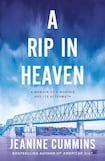
Crime has always sold newspapers and books. Now, with podcasts, streaming services, and terrestrial TV all vying to flog gore these days, the satisfying story arc of crime and punishment is having a moment like never before.
The draw is still the same tawdry old thing it ever was: vicarious thrill meets catharsis. And this, perhaps, is all well and good when it comes to crime fiction – despite its creepy obsession with female victims. But it’s quite another matter when the story is true and involves real families who must live through the most tragic circumstances in the full glare of sensationalist media coverage, the sort of coverage than can go on for decades after the fact.
Future novelist Jeanine Cummins was 16 in 1991, when her family spent spring break in her parents’ home city of St Louis. Cummins and her brother Tom (19) loved to spend time with their cousins Julie (20) and Robin Kerry (19) in a midwestern city they perceived to be much safer than their own home town of Washington, DC. Picture here a big, warm, close Irish-American family – Jeanine was even a 1993 contestant in the Rose of Tralee.
On April 5th, the last night of their holiday, Tom decides to sneak out with his two cousins to embark on the most innocent of escapades: to see where wannabe poet Julie had graffitied a poem on the old Chain of Rocks Bridge, a local landmark once part of Route 66 but disused and superseded by a more modern bridge nearby. Spanning the Mississippi river and joining Missouri and Illinois, the old truss bridge was not thought dangerous beyond its lidless manholes.
Menacing
That night on the bridge, the three cousins encountered four youths around their own ages, Marlin Gray, Antonio Richardson, Reginald Clemons and Daniel Winfrey. Seemingly friendly at first, the gang turned menacing, separating Tom from his two cousins in order to take turns raping Julie and Robin, before ushering all three through a manhole down onto the bridge’s superstructure. Here, Julie and Robin were pushed 50 foot into the roiling waters of the Mississippi while Tom was told to jump or be shot.
The heart of this memoir, and its finest stretch of writing, is its description of Tom’s struggle for survival in a Mississippi that’s particularly fast-moving and tricky at an interval where underwater rocks and ledges create treacherous rapids. Fighting exhaustion, he desperately calls out for his cousins and at one stage a weakening Julie finds him, grips on to him, and pulls him under.
Pushing both himself and Julie to the surface again, he encourages her to keep swimming, but next time he raises his head she’s nowhere to be seen. At the end of his waning strength, Tom finally makes it to shore.
When police later begin to question his account of the night’s events, it’s partly because the odds of surviving the fall and the swim were believed to be slim. Then, in a plot twist worthy of crime fiction, the exhausted Tom becomes the sole focus of the police investigation when he fails a polygraph test and on this flimsy basis is terrorised into agreeing to a scenario the interrogators dream up. The cops soon leak to the press that they suspect Tom of attempting to rape Julie and that the resultant struggle saw all three cousins fall into the river.
The rest of the memoir is taken up by Tom’s fight to clear his name and the arrest and progress through the justice system of the four perpetrators, three of whom were African-American and convicted on the say-so of the only white youth among the four who turned state’s witness to bolster Tom Cummins’s account of the night.
Victims
Jeanine Cummins embarked on writing this memoir with her brother, but Tom pulled out believing he couldn’t endure yet more exposure for the tragedy that almost destroyed his life. Yet one feels that the narrative achieves most clarity and coherence when describing Tom’s perceptions and experiences versus when it putters along name-checking other family members and padding out its central story with often confusing irrelevancies.
Jeanine, who writes about herself in the third person in this her publishing debut, admits bias and states that her reason for writing the book (first published in the US 16 years ago) was to put the victims at the heart of the story. And it’s true that much true crime, inadvertently or otherwise, foregrounds the murderer – and the crime – in a way that’s morally murky and obliterates the victim’s personhood.
On the other hand, writing about your own family can be fraught with compromises, and elisions and these mar A Rip in Heaven despite its fine intentions.
Yvonne Nolan is a literary journalist and TV producer.












